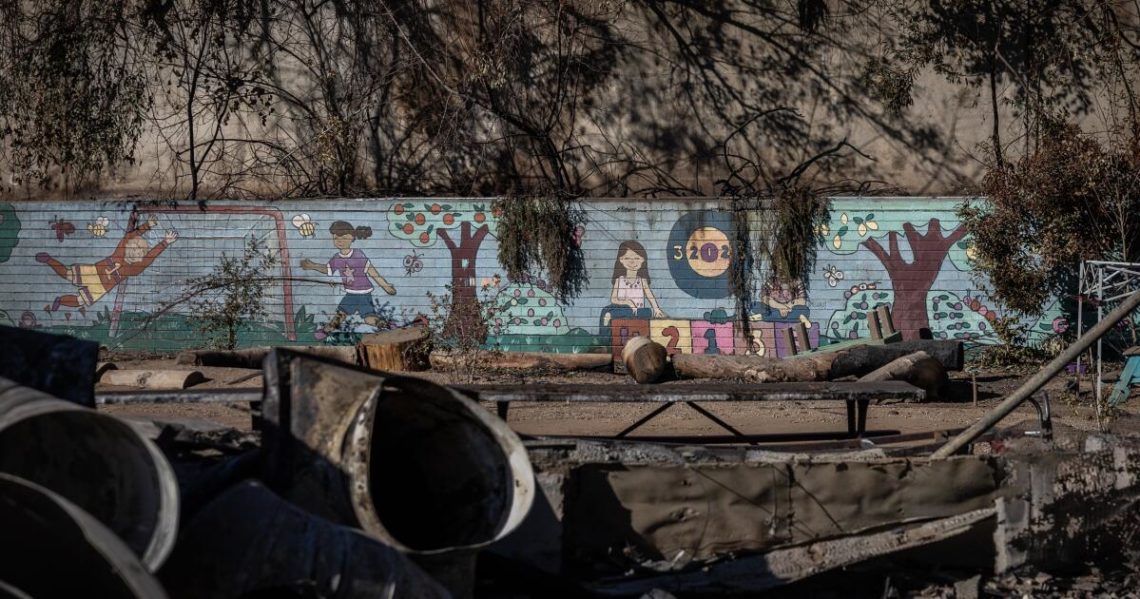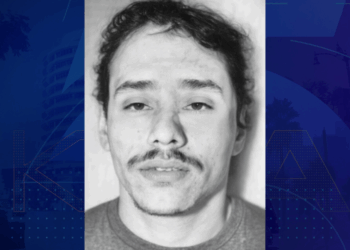Eleven of the 23 Pasadena Unified School District schools, where students have been back on campus since January, have contaminated soil following the Eaton fire, the district found.
Over 40% of the schools had lead at levels exceeding the state’s health-based limits for residential soil, and over 20% had arsenic levels beyond what L.A. County considers acceptable, according to the results released Wednesday.
The district found lead at over three times the state’s allowable limit of 80 milligrams per kilogram of soil next to Blair High School’s tennis courts and over double the limit at four elementary schools. Lead, when inhaled through dust or ingested from dirt-covered hands, can cause permanent brain and nerve damage in children, resulting in slowed development and behavioral issues.
Arsenic, a known carcinogen, was found at a concentration of 92 mg/kg at San Rafael Elementary School. The county has used 12 mg/kg as a reference level, based on an estimate of the highest naturally occurring arsenic levels in all of Southern California. The naturally occurring background level of arsenic in Altadena and Pasadena ranges from 4 to 10 mg/kg, according to a 2019 study by the U.S. Geological Survey.
There is no safe exposure level for arsenic or lead.
“I’m worried about her safety,” said Nicole Maccalla of her daughter, a sixth-grader at Octavia E. Butler Magnet, which is located less than a mile from the Eaton fire burn area. “I would really like to have assurances that she’s physically safe while she’s at school.”
Instead, what she got was a map of the school posted by the district showing lead levels 40% and 70% above the allowable limit in soil samples taken next to the school entrance and near the outdoor lunch tables, respectively.
“If, literally, you’ve got to walk by lead to walk up the steps to school, then how many kids are walking through that with their shoes and then walking into the classroom?” Maccalla said. “It’s not like these are inaccessible areas that are gated off.”
Maccalla made the hard decision to let her daughter return to school in January despite early fears — worrying that the trauma of moving schools directly after the fire would be too much.
Along with other concerned parents, Maccalla has been pushing for both soil and indoor testing for months at school board meetings. It was only after the L.A. County Department of Public Health announced in April that it had found 80% of properties had lead levels exceeding the state’s standards in some areas downwind that the district hired the environmental firm Verdantas to conduct testing at schools.
“The school board has been very resistant to any request for testing from parents,” she said. “The superintendent kept saying it’s safe.” The parents’ response: “Prove it.”
The district released test results for 33 properties it owns — some with district schools and children’s centers, others with charter and private schools, some rented to nonprofits — that were all largely unscathed by the fires. On the 22 properties with public schools, students have been back in the classroom since late January. The full results with maps for each school can be seen on the school district’s website.
The district stated on its website there was “no indication that students or staff were exposed to hazardous levels of fire-related substances in the soil,” noting that any contamination found was highly localized. (For example, while seven samples at Blair High School identified elevated lead levels, 21 samples did not.)
Health agencies also advised the district that soil covered with grass or cement was unlikely to pose a health risk.
In response to the results, the district stated it would restrict access to contaminated areas, complete follow-up sampling and work on remediation over the summer. No classroom instruction would be affected.
“We want to be abundantly clear: Safety is not negotiable,” Pasadena Unified School District Supt. Elizabeth Blanco said in a press release. “That’s why we’re moving forward with both urgency and care.”
For Maccalla, it’s too little too late. “I would like to know what their plan is for monitoring the health of the children, given you’ve got kids that have already been playing outside in that soil for four months straight,” she said. “So what’s their health crisis mitigation plan?”
The test results also found high levels of chromium — which, in some chemical configurations, is a carcinogen — on one campus. Another had high levels of a class of contaminants called polycyclic aromatic hydrocarbons, which can cause headaches, coughing, skin irritation and, over long periods of exposure, can come with an increased risk of cancer.
Three of the five properties with the district’s children’s centers also had elevated levels of heavy metals — two with lead, one with arsenic.
When Maccalla — who has spent much of her time after the fire volunteering with the community advocacy group Eaton Fire Residents United — first saw the map of her daughter’s school, she began to formulate a plan to rally volunteers to cover the contaminated areas with mulch and compost before school buses arrive again Monday morning. (That is an expert-approved remediation technique for fire-stricken soil.)
“If the district is not going to do it, the state’s not going to do it, our county’s not going to do it, our city’s not going to do it,” she said, “well, the citizens will. We absolutely will.”
The post Nearly half of Pasadena Unified schools have contaminated soil, district finds appeared first on Los Angeles Times.




